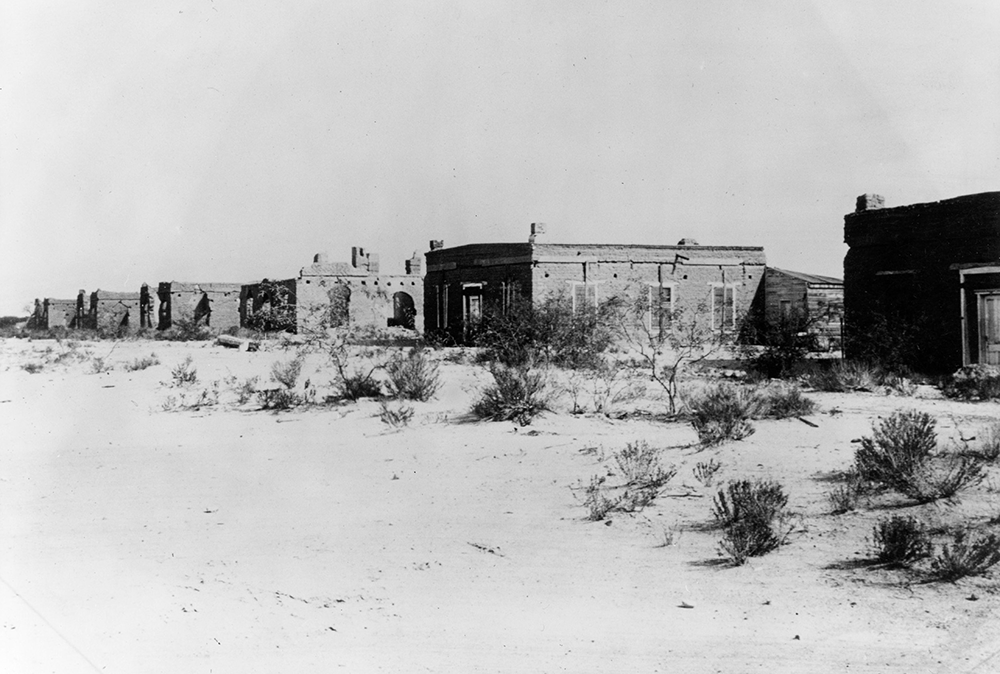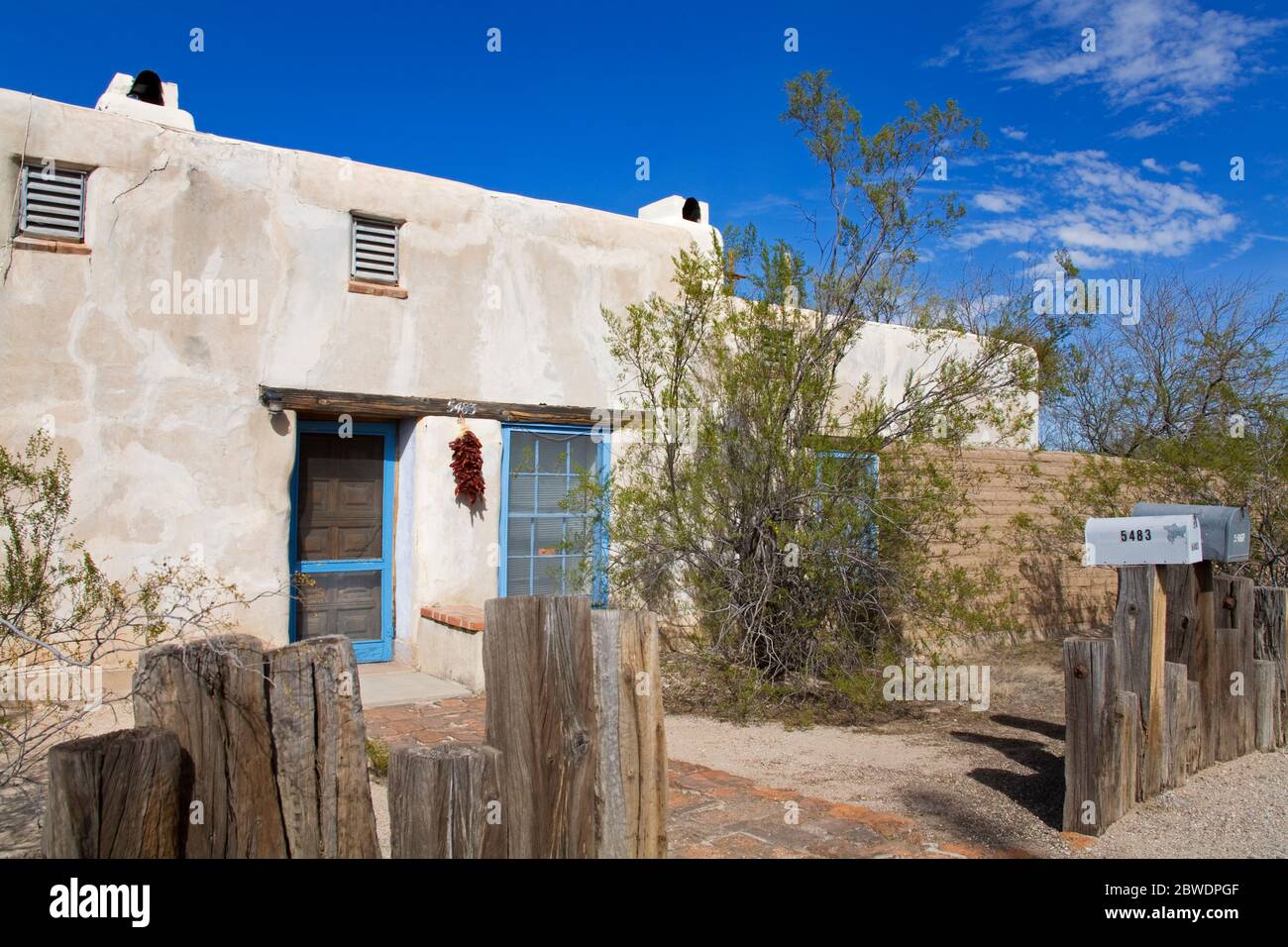
Fort Lowell: Echoes in the Adobe, Arizona’s Silent Sentinel of the Frontier
In the heart of Tucson, Arizona, where the Sonoran Desert stretches under an endless sky, lie the sun-baked adobe ruins of Fort Lowell. More than just a collection of crumbling walls and sun-bleached foundations, this historic site is a profound testament to a bygone era – a period of fierce conflict, arduous frontier life, and the relentless march of American expansion. Fort Lowell was not merely a military outpost; it was a crucible where cultures clashed, where soldiers endured unimaginable hardships, and where the very fabric of Arizona’s identity was forged. Today, its silent sentinels of adobe stand as powerful reminders of the complex and often brutal story of the American Southwest.
The story of Fort Lowell begins not with grand pronouncements, but with practical necessity. In the tumultuous years following the American Civil War, the vast, untamed territories of Arizona were a cauldron of conflict. Settlers, lured by the promise of land and mineral wealth, increasingly encroached upon the ancestral lands of indigenous peoples, particularly the Apache. Raids and counter-raids became a grim reality, prompting the U.S. Army to establish a series of outposts to protect nascent settlements and secure vital transportation routes.
Initially, a temporary military camp, Camp Lowell, was established in 1862 within the growing town of Tucson. However, its close proximity to civilian life presented numerous challenges, from discipline issues to the spread of disease. A strategic decision was made in 1873 to relocate the post further out, some seven miles northeast of Tucson, to a site along the Rillito River. This new location offered better access to water, a more defensible position, and the isolation deemed necessary for military operations. Thus, Fort Lowell was born, named in honor of Brigadier General Charles Russell Lowell, a Union cavalry officer who died during the Civil War.

Life at Fort Lowell was a crucible of hardship and duty, a far cry from the romanticized images of the Wild West. The Sonoran Desert, while beautiful, was a formidable adversary. Summers brought scorching temperatures, often exceeding 110 degrees Fahrenheit, while winters could be surprisingly chilly. Dust, an ever-present companion, coated everything, infiltrating uniforms, food, and the very air soldiers breathed. Disease – malaria, dysentery, typhoid – was a constant threat, often claiming more lives than enemy bullets. Records show that illness was a pervasive problem, with soldiers frequently in and out of the post hospital.
The fort itself was a testament to frontier ingenuity and the limitations of available resources. Constructed primarily from locally sourced adobe bricks, mesquite timbers, and saguaro ribs, the buildings were designed for practicality rather than grandeur. The layout included barracks for enlisted men, officer’s quarters, a hospital, a quartermaster’s storehouse, a commissary, stables, a guardhouse, and a parade ground that served as the heart of the post. While basic, these structures provided essential shelter and support for the hundreds of soldiers, laundresses, and civilian employees who called Fort Lowell home.
The troops stationed at Fort Lowell represented a diverse cross-section of American society. Predominantly infantry and cavalry units, they included recent immigrants seeking a new life, disillusioned veterans of the Civil War, and the storied African American "Buffalo Soldiers" of the 9th and 10th Cavalry Regiments, whose courage and resilience in the face of both the enemy and systemic prejudice are legendary. Their duties were grueling and monotonous: endless drills, target practice, fatigue details, and above all, long, arduous patrols across vast and unforgiving terrain.
Fort Lowell’s primary mission was to serve as a strategic base for operations against the various Apache bands who fiercely resisted American encroachment. From its gates, cavalry and infantry units embarked on countless campaigns, tracking Apache warriors like Cochise, Victorio, and Geronimo across hundreds of miles of mountains and deserts. These campaigns were characterized by their brutal nature, the incredible endurance required of both sides, and the often-elusive nature of the enemy. The Apache, masters of their homeland, used their intimate knowledge of the terrain to their advantage, often disappearing into the rugged landscape as quickly as they appeared.
One interesting fact is the logistical challenge of supplying such an isolated outpost. Everything, from rations and ammunition to uniforms and medical supplies, had to be transported over vast distances by wagon train, often from as far away as California or Kansas. This made the quartermaster’s role at Fort Lowell absolutely critical. The efficiency of the supply chain directly impacted the effectiveness and survival of the troops. The sutler’s store, a private enterprise operating on the post, offered soldiers a limited range of goods beyond their official rations, from tobacco and personal items to small luxuries – often at inflated prices.
The fort was not an isolated island; it existed in a complex social and economic landscape. Soldiers interacted with Mexican vaqueros, Tohono O’odham people who often served as scouts or laborers, and Anglo settlers who were slowly establishing ranches and farms in the area. These interactions were often fraught with tension, but also sometimes marked by periods of cooperation and trade. The presence of the fort also provided an economic boost to Tucson, creating demand for local goods and services.
By the late 1880s, the era of the Apache Wars was drawing to a close. The surrender of Geronimo in 1886 marked a significant turning point, effectively ending large-scale hostilities between the U.S. Army and the Apache. With the pacification of the frontier and the establishment of new military strategies, the need for many isolated frontier posts diminished. Fort Lowell, its mission accomplished, was officially abandoned by the U.S. Army in 1891. Its buildings were dismantled, its resources sold off, and the land reverted to civilian ownership.
Nature, alongside human hands, began its slow reclamation. Settlers and homesteaders moved onto the abandoned post, salvaging building materials, cultivating the land, and establishing a small agricultural community. This community, which became known locally as "El Fuerte" (The Fort), carried on the legacy of the site in a different form. The ruins gradually became part of the landscape, silent witnesses to the passage of time.

However, Fort Lowell’s story did not end with its abandonment. The rediscovery of its significance began in earnest in the mid-20th century. Local historians, archaeologists, and preservationists recognized the immense value of the site as a tangible link to Arizona’s territorial past. In 1960, the Fort Lowell Historic District was established, protecting the remaining ruins and the surrounding cultural landscape. Pima County, through its Parks and Recreation department, acquired portions of the original fort site, embarking on a long-term project of preservation, archaeological investigation, and interpretation.
Today, Fort Lowell is more than just a collection of crumbling walls; it is an open-air museum and a vibrant historical park. Archaeological digs have uncovered countless artifacts, from soldier’s buttons and uniform insignia to pottery shards and fragments of daily life, offering invaluable insights into the realities of frontier existence. The Fort Lowell Museum, housed in a reconstructed commanding officer’s quarters, provides a deeper narrative through exhibits, photographs, and period artifacts, bringing the fort’s history to life.
Visiting Fort Lowell offers a unique opportunity to step back in time. Walking among the foundations of the barracks, the hospital, and the commanding officer’s quarters, one can almost hear the ghostly echoes of cavalry bugles, the bark of orders on the parade ground, and the quiet conversations of soldiers gathered around a campfire. The stark beauty of the desert setting, juxtaposed with the remnants of human endeavor, creates a powerful sense of place and reflection.
The enduring legacy of Fort Lowell lies not only in its role in the Indian Wars but also in its representation of the broader American experience. It speaks to themes of conflict and conquest, resilience and adaptation, the clash of cultures, and the relentless pursuit of a new future. It reminds us that history is complex, often uncomfortable, and always nuanced.
Each year, events like "Fort Lowell Days" bring the site to life with reenactments, living history demonstrations, and cultural presentations, drawing visitors from across the region. These events serve to educate the public, honor the sacrifices made by all who lived and died there – soldiers, settlers, and indigenous peoples alike – and ensure that the lessons of the past are not forgotten.
In its silent, sun-baked grandeur, Fort Lowell remains a powerful, tangible link to Arizona’s tumultuous past. It stands as a sentinel, not of military might, but of memory, inviting us to contemplate the courage, the hardships, and the profound changes that shaped the American Southwest. As the desert winds whisper through its adobe ruins, they carry the echoes of a frontier long gone, but never truly forgotten.


